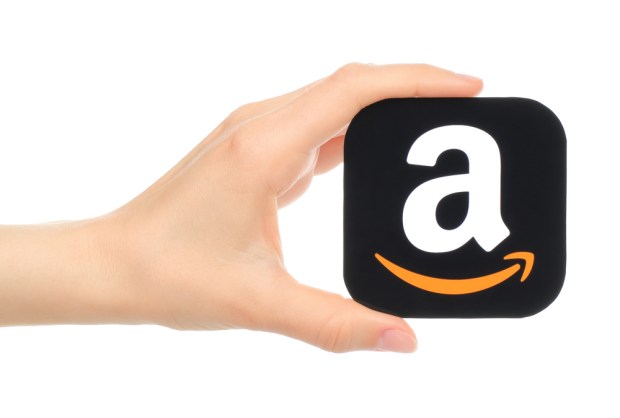Amazon Tracker: Where The Customers Are

Amazon is meeting its customers where they are. In the U.K., the eCommerce giant is letting shoppers load up their accounts using cash, and in the U.S., it’s leveraging that new partnership with Whole Foods to make picking up or returning Amazon goods even easier than ever. It’s also poised to deal another blow to the retail market with a new fashion algorithm that caters to consumers’ love for cheap, trendy clothing. But it’s not all sunshine and rainbows: Find out why this South Carolina couple wants Amazon to pay their medical bills.
Digital Cash
In support of the unbanked and under-banked, Amazon this week launched its Amazon Top Up service in the U.K., allowing customers to load up their Amazon account with cash at locations that have a PayPoint system in their brick-and-mortar retail location. This is an important alternative for serving a customer base that may not have (or may not want to share) digital payment information.
To pay cash, customers first acquire a barcode linked to their account via the Amazon website or mobile app. This can be printed or displayed on their smartphone screen. Then they take the barcode and cash to the PayPoint location at a local convenience store, grocery store or gas station, where the cashier runs the transaction.
The Whole Picture
In case you missed it, that deal everyone’s been talking about between Amazon and Whole Foods was finally set in stone this week, and prices at the organic grocer have already dropped as a result. The companies are working together to make wholesome, natural food affordable for all.
Part of that venture will be introducing special deals and savings for Amazon Prime customers who shop at Whole Foods, with the eventual goal of making Prime the chain’s official customer rewards program. Furthermore, Amazon customers will have access to the market’s private label products (365 Everyday Value, Whole Foods Market, Whole Paw and Whole Catch) through the eCommerce giant’s website, app, and special programs (AmazonFresh, Prime Now and Prime Pantry).
Some Whole Foods stores will be getting Amazon Lockers, where customers can order goods online and pick them up in store. Shoppers will also be able to make Amazon returns at Whole Foods stores.
Dress To Impress
Amazon’s latest algorithm could blow minds across the Internet – and blow sales for every other clothing retailer.
The algorithm, developed by Amazon’s Lab 126, uses neural networks to analyze batches of fashion imagery discovered across Instagram, Facebook, and Amazon’s own Echo Look cameras. Amazon could then use AI to design new clothing quickly and cheaply based on the trends it finds.
Amazon Prime is now in two-thirds of U.S. households, with millions of other casual shoppers using the platform on and off, and Americans’ desire for cheap, trendy clothing is no secret. With these factors combined, Amazon could once again be gearing up to give retailers a run for their money.
Eye Sore
If a South Carolina couple gets its way, Amazon will be paying their medical bills to monitor eye damage they sustained while watching the solar eclipse using faulty eclipse glasses purchased from the eCommerce giant.
In the lead-up to the eclipse, there were a few reputable companies manufacturing NASA-approved protective eyewear for use during the once-in-a-lifetime event – but there were even more companies making and selling defective eclipse glasses to turn a quick buck.
Amazon says it issued a recall for some products in the weeks before the eclipse, but the couple says they were not informed of the recall. They began suffering headaches and distorted vision shortly after watching the eclipse.
Out Of Stock
The original Amazon Echo device is sold out, and the e-tailer’s website is telling customers, “We don’t know when or if this item will be back in stock.” It’s hard to see this as a mistake or an inability to meet consumer demand: Amazon has been repeatedly and aggressively discounting its flagship home speaker all summer long, and many are speculating that the company is trying to make room for a new version.
The move comes just in time for the potential upgraded device to compete with Apple’s forthcoming HomePod, as well as to make a killing over the holidays. It’s September, after all. Not too soon to be thinking about Christmas.